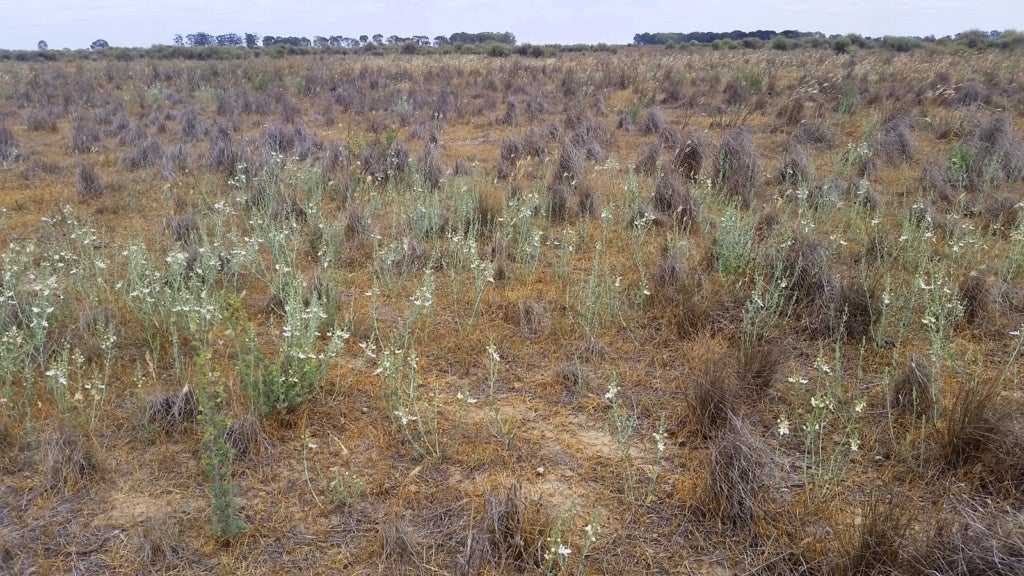Renewables vs. Nature: What the Race to Net Zero Really Means for Biodiversity and How Some Nations are Striving for Better
Cecilia Riebl – ILCN Regional Representative for Australasia
Since 2021, the United Nations and International Energy Agency have been calling for the world to scale up renewable energy use to achieve net zero emissions by 2050. In the years since, policies, technologies, and knowledge surrounding renewables have made them more effective, accessible, and desirable. But their rollout has not come without its own set of environmental impacts. As a leader in renewable energy use, Australia is grappling with these impacts, while also challenging problematic narratives about the perceived effects of renewable technology.

Policy Responses and Opportunities
With its abundant renewable energy potential, Australia is at the forefront of a global shift toward renewable energy use, which is a critical response to climate change worldwide. In 2024, it generated an estimated 42 percent of its electricity through renewables and the federal government aims to make that 82 percent by 2030.
But as the renewables industry grows in line with ambitious net zero targets, so too does the scrutiny surrounding its impact on land use and local ecosystems, and the capacity of the planning frameworks to respond and adapt to the renewable energy transition. Policymakers and renewable energy proponents are navigating this complex terrain by devising strategies that balance environmental conservation with the urgent need for climate action.
Impacts of Renewables on Nature
Renewable energy projects, while far less damaging than fossil fuels long term, can still disrupt local ecosystems. Large-scale solar farms often require developers to clear significant areas of land, leading to habitat loss for native species. Wind-farm projects impact birds and bats, which are vulnerable to turbine collisions. Additionally, the infrastructure required for renewable energy—such as roads, transmission lines and substations—can fragment habitats, disrupt wildlife corridors, and introduce invasive species.
Policy and Industry Responses
Policy makers and industry leaders recognize the potential environmental downsides of developing renewable energy and are taking steps to mitigate harm. This includes responsible site selection, implementing technological and agrarian innovation, and leveraging conservation incentives and best practices.
Site Selection
Strategic planning and site selection are emerging as critical tools in reducing the ecological footprint of renewable projects. In Australia, state-based Renewable Energy Zones (REZs) aim to concentrate renewable energy development in areas with high energy potential, proximity to transmission infrastructure, and lower agricultural and ecological value. Projects in degraded agricultural lands illustrate this approach.
In practice however, biodiversity considerations are just one of many constraints on a project, which must also take into account visual amenity and noise controls, as well as landholder, community, and First Nations wishes. Communities’ concerns about the aesthetic impact of renewable energy infrastructure can result in projects being pushed out further from human settlements and toward ecologically sensitive areas. To minimize biodiversity impacts going forward, and ensure the efficient rollout of renewable energy projects, policy makers will need to clearly prioritize nature and net zero over visual amenity.

Internationally, similar initiatives to guide renewables site selection are underway. The Nature Conservancy’s Site Renewables Right initiative provides a framework to guide renewable energy developers toward locations that minimize ecological disruption while maximizing energy production. In Europe, the Renewable Energy Directive requires European Union countries to designate renewables acceleration areas—areas that are suitable for renewables and are not expected to have a significant environmental impact—by February 2026.
As The Nature Conservancy observed in an article on the future of renewables in Europe, “smart siting reduces costs, shortens permitting, positively impacts natural and cultural resources, and supports equity – enabling the achievement of multiple goals at once.”
Technological and Agrarian Innovation
Technological innovations are also playing a role in how renewables interact with nature. Bird-friendly turbine designs that use ultraviolet paint to make blades more visible to birds are being deployed in parts of the world with high avian activity. Similarly, monitoring systems, such as radar and acoustic detectors, temporarily shut down turbines when birds or bats are nearby.
There is also growing evidence across the globe that renewables projects can improve biodiversity and allow farming to continue. International studies have found that ‘agrivoltaics’—strategies to co-generate food and energy on the same area of land rather than allowing them to compete for land—can boost agricultural productivity, increase land and water use efficiency, and improve soil health.
Technologies like these also provide co-benefits for industry, including future-proofing developments, reducing land-use conflict and streamlining approval processes by exceeding legislated requirements. At this stage Australia has been recalcitrant in introducing these measures, in large part due to regulators’ reluctance to accept what they consider to be novel approaches to mitigation.
Incentives and Best Practices
Environmental and conservation incentives are also critical to supporting low-impact siting and project design. The US Inflation Reduction Act (2022) provides a 10 percent tax credit for clean energy developments built in “energy communities,” which include brownfield sites and decommissioned coal mines. A number of US states have also enacted legislation to promote pollinator-friendly solar development.
Peak bodies leading environmental stewardship at the national and international level are well situated to identify best practice and to work with renewables proponents on implementation. For example, the Australian Clean Energy Council has developed a Best Practice Charter, which requires signatories to report annually against a range of commitments, including being “sensitive to areas of high biodiversity, cultural and landscape value in the design and operation of projects.” This in-house accountability measure is an opportunity for members to see what others are doing and raise the bar across the board.
Beware of False Economies
While it is critical that environmental considerations are built into renewable energy projects, it is also important that conservation organizations and policy makers do not burden the renewables sector disproportionately with protracted planning approvals processes or community objections. Doing so could prevent the appropriate deployment of renewable projects and stall progress toward net-zero goals.
Certain narratives surrounding the dangers of renewable energy infrastructure have taken root, but many of these are shared out of context, artificially inflating people’s fear of the sector. For example, while wind turbines do cause bat and bird deaths, domestic cats cause vastly more damage. Around 2,000 times more birds are killed by cats in the United States compared with wind turbines (2,400 million vs 1.2 million). Similarly, in Australia, farmers have a long history of illegally draining wetlands to increase their productive farm area. This, alongside the impacts of unmanaged of cats, foxes and brown rats, has a substantially larger impact on local bird populations than the presence of wind turbines.
As the Australian Clean Energy Council (CEC) emphasised in a 2024 article on windfarms and biodiversity, the greatest opportunities lie in a regional approach to conservation, rather than in addressing threats to biodiversity on a site-by-site basis. Senior policy officer at the CEC Bronya Lipski points out in an article for The Guardian that, “Industry is required to avoid and minimize their particular impact but cannot be expected to single-handedly support species recovery when so many other threats [such as habitat loss and climate change] are ignored”.
Balancing Climate Action and Conservation
While renewable energy infrastructure does impact nature, its effects must be weighed against the risk posed by unmitigated climate change. Research shows that climate change is the factor that presents the greatest long-term threat to biodiversity. That renewables are an effective response to climate change must be a critical component of the debate on their environmental impact.
The urgency of the global climate and biodiversity crises require nations to rapidly expand their use of renewable energy. However, the environmental costs of this expansion cannot be ignored. The challenge lies in finding pathways that mitigate the ecological impacts of renewable energy development while accelerating the transition away from fossil fuels.
Integrated approaches that combine strategic planning, technological innovation and robust regulation offer a way forward. By learning from both domestic and international examples, Australia can set a global standard for renewable energy development that safeguards nature and addresses the climate crisis.
